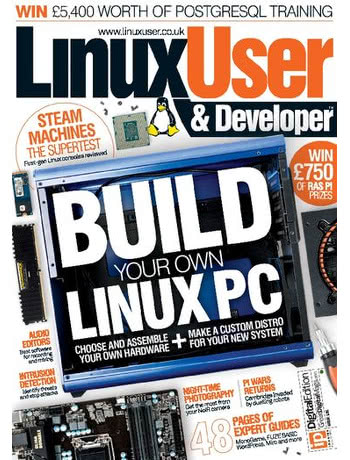 To say this month’s Linux User & Developer is a bumper issue is something of an understatement: in addition to my usual four-page news spread, you’ll find a three-strong group test of Steam Machines and a detailed step-by-step guide to building your own Linux box from a pile of parts.
To say this month’s Linux User & Developer is a bumper issue is something of an understatement: in addition to my usual four-page news spread, you’ll find a three-strong group test of Steam Machines and a detailed step-by-step guide to building your own Linux box from a pile of parts.
First, the group test. Editor Gavin Thomas contacted me with the news that they had an Alienware Steam Machine in, and asked whether I would be able to source and review a rival device for a head-to-head. I went one better, the overachiever that I am, and thanks to the very lovely people at CyberPower and Zotac I was able to pick up a Syber and NEN to be run through their paces alongside the Alienware.
For Linux User & Developer, the Steam Machines were very new territory. The magazine has previously focused largely on professional uses for Linux, but the launch of mainstream-targeted console-beating gaming PCs running Steam OS – Valve’s gaming-centric customisation of Debian Linux – couldn’t be ignored. I started by designing a series of benchmarks which could be run across all three machines in order to provide a performance comparison, which then needed to take into account the price difference between the two entry-level machines from Alienware and CyberPower and the top-end Zotac NEN. The winner? Well, you’ll have to read the review.
A major group test like this would normally be enough, but Gavin also asked me to come up with a cover feature for the issue: building your own Linux machine. As with the group test, this issue marks the first time Linux User & Developer has strayed into the PC-building arena, and Gavin was looking for someone who could lend an expert eye to the hardware side of the feature.
After an initial hiccough with a parts supplier that let me down, the wonderful people at Overclockers UK were kind enough to loan me a shopping cart full of hardware, including an Intel Skylake processor. The specifications of the machine were kept low enough to appeal to buyers on a budget looking for a future-proof bargain, while having enough poke to ensure a pleasant experience. Naturally, the hardware was chosen specifically with Linux compatibility in mind – though the Skylake family of processors does require the Linux 4.4 kernel or newer to run at its full potential, which is covered in the software-centric second half of the feature.
Issue 161 is definitely a personal highlight, containing as it does such a large percentage of contents from my trusty keyboard. You can see the result for yourself with a trip to your local supermarket, newsagent, or through digital distribution services such as Zinio.
